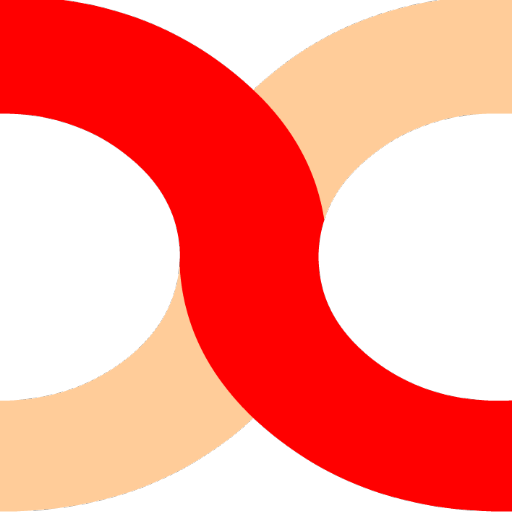call: Open call for wrong works: Scripting the Other
Deadline: 15 September 2017
Call for entries
Open call for wrong works: Scripting the Other
SCRIPTING THE OTHER is a pavilion (online exhibition) in the third
edition of The Wrong – New Digital Art Biennale (Nov 1, 2017 – Jan 31,
2018).
We’re calling for works that explore the notions of the Other and
Otherness in online, performative scripting and writing. The work should
preferably have some live, dynamic function – e.g. through (ambivalent)
interaction with user/audience, communicating, streaming, mashing
textual-visual sources and feeds, live coding,
stream-of-consciousness-or-data writing or scripting.
The idea is to use internet as an instrument of the Other, and
antitheses to the echochamber of the self, and set up an interface
towards it, as if communicating with or observing an undefined, unknown
or uknowable entity, operating system, or AI. The exhibition examines
text and text-visuals in meeting with an inordinant ‘Here Comes
Everything’, the role and protocol of author, reader – entangled and
undermined.
If possible, the exhibition will take form as an embodiment of the Other
with the works selected being incorporated within it.
Works for the exhibition should be made for web browsers.
Deadline: 15. September 2017
Contact: mail@noemata.net
Scripting the Other is part of the project Other Writing initiated by
Noemata and funded by Arts Council Norway. Noemata is a production site
for digital and netbased art affiliated with PNEK (production network
for electronic art Norway).
Notes
‘Live coding’ meaning programmable live and that the writing process is
made visible and part of the execution, or put in another way, that it
includes a visible operational meta-level where the text is
coded/generated.
‘Ambivalent interaction’: To challenge and undermine ideas about
communication, meaningfulness, identity, noise/signal, writer, reader,
and the like, in relation to text. For example, the audience/browser
should ask questions about what this text _is_ – is it communication? do
I write? who’s writing? do I read? both? – and at least to conclude that
the text has its proper life and symbolically approaches the Other (the
opposite to self and identity). Ambivalent interaction is a metaphor for
the way we operate on the internet – how internet opens up for a game of
identity, partly necessitated in the face of an overwhelming and
frenzied ‘other’, something which in turn has created a feverish market
for simulacra, representation and imitation – think of social media
acting as a ‘big data’ simulacrum, and ‘selfies’ acting as a kind of
mockery mirror. In reality, this kind of identity has an equivalent
vast, dark side, ‘other’, as a reaction, since our default state on the
internet is both anonymous and transparent (two antitheses of identity).
‘The Other’ as a writing process, and the category ‘Scripting the Other’
as an aggregate term for text or text-visuals not immediately
categorizable: “The concept that the Self requires the existence of the
Other … Lacan associated the Other with the symbolic order and
language. Levinas connected it with the scriptural and traditional God,
in The Infinite Other. … Ethically, for Levinas, the “Other” is
superior or prior to the self; the mere presence of the Other makes
demands before one can respond … Levinas talks of the Other in terms
of ‘insomnia’ and ‘wakefulness’. It is an ecstasy, or exteriority toward
the Other that forever remains beyond any attempt at full capture, this
otherness is interminable (or infinite)… it has not been negated or
controlled. … The “Other”, as a general term in philosophy, can also
be used to mean the unconscious, silence, insanity, the other of
language (i.e., what it refers to and what is unsaid), etc.” —
https://en.wikipedia.org/wiki/Other
SCRIPTING THE OTHER will explore through such a hybrid reading-writing
process an integration to a wider operational identity, perhaps with a
reference to analytical psychology and its individuation process if we
look at the unconscious as ‘the Other’ and internet again as the
unconscious through big data which we are interacting ambivalently with.
If we associate ‘the Other’ with the symbolic order and language, and
assume that the unconscious has a language, we can treat the internet
with its endless stream of data as a stream-of-(un)consciousness and
‘Other’ in the meeting with the browser, identity and traditional reader
and writer.
A “nihilogue” (e-lit term introduced by Espen Aarseth, 1997) – a text
which has neither origin or impact (author or audience), for everyone
and for no one, in the sense that it is automatic or unconscious, and
corresponds approaching the ‘the Other’, an existence evading control,
and in a stream which is continuously and increasingly diverging; can be
compared with a ‘default state network’ in the brain, whirring
constantly, a dream without a dreamer.
The reader/audience might interact with the script, either in plain text
or commands, and the script will process the input and respond in
different manner similar to the role as ‘other’/unknown/internet; that
the input for instance can be filtered through social networking,
search, databases, algorithms, providing ‘resonant’ answers, i.e. the
answer is a kind of reverberation of the situation where the context
plays part and changes (as is often the case on the internet –
everything is context, everything is protocol).
The scripting might serve as communication between transmitter and
receiver, where the aspect of ‘Other’ is put in the background and
intervens more sporadically. These modes can be compared with the Other
as ‘insomnia’, ‘wakefulness’, ‘ecstasy’, ‘presence’.
The scripting might have a relatively pure and transparent interface, a
writing surface, in the meeting between the transmitter and
computer/internet/recipient, where these different roles avoid defining.
As mentioned the writing surface can provide a sort of resonance space
between identity and ‘other’, as the scripting uses the input to process
textual mass from the net, and thereby intervening in the writing
process which might reveal an associative-resonant meaning. The
scripting can itself start this process and the user act as a resonant
search machine for it.
Links
https://www.facebook.com/groups/thewrong3/
https://www.facebook.com/thewrongbiennale/
http://noemata.net/
https://www.facebook.com/noemata.net/

